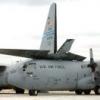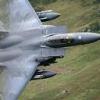Just relax and be yourself. My personal 0.02 is not to get too wrapped up with your interview Q&A. I did ECIC, but elected not to do the phone follow up because I didn't want to come off as having canned answers. Rather than try to think of stories for every possible TMAAT scenario, I tried to pick 6-9 stories that each covered several question areas so I could apply one to a number of different questions.
Below is what I summarized for the AA hiring process to several people who followed me. I have attached a close version of the cognitive test they use.
-------------------------------
Here’s a bit of a timeline of what you can expect during the application / hiring process. For me it was about six months from when I submitted my application to when I received an email for a video interview, but this was in mid-2015 when the high number of furlough recalls and flow-through guys caused them to stop interviewing for a while. The first response you'll get is an email from AA Support Department (aasupport@pilotcredentials.com) asking you to do a video interview. Make sure you check your junk mail regularly and/or add that e-mail to your filters. I've heard of lots of folks who missed notifications that went to junk mail.
You have a few days to do the video interview. If you already have your suit, wear it. If you don't, at least wear a nice shirt and tie. Do it against a neutral background and remove any distractions (wife, kids, pets, turn off phones, etc.). Have a piece of paper and pen handy. It's not an interview per se, you'll be asked five pre-recorded questions and after a 60 second prep period to compose your answer, it will start recording and you'll give your answer (which can be up to three minutes). If you don't already read Airline Pilot Forums, I would recommend it. There are a lot of topics, but for American there is long running thread about the interview process.
Here is my best memory at the expanded video interview questions:
1 - "Why do you want to fly with AA?"
2 – You are given a brief about an approach (frequencies, altitudes, runways, etc.). You’re not specifically told to write it down, but you’re told to have a pen/pencil and paper beforehand, so I recommend writing it down as it’s being given to you. When you brief it back, try not to make it too obvious that you’re reading it from the paper.
4 – I was given a notional airport and five NOTAMs about the airport. You needed to pick your top 3 concerns and brief why they might be a problem. I don’t remember them all, but the ones I picked were nearby VFR traffic (might be a hazard, especially if they’re not talking to anybody or on flight following), tendency to be switch to a different runway on final (potential for runway incursion/violation), and potential for fog to pop up (possibility to have to hold or divert with short notice).
5 - TMAAT you had to deal with a delay with customers. I explained that I have never dealt with it in a traditional sense, but that my job as a fighter pilot was always to be in place on time to support troops on the ground (my customers). I explained having had weather delays while flying commercial, and chatting up other folks who were likewise delayed and explaining that it was beyond the control of the airline.
Most folks consider the video interview a formality - they just want to make sure you don't have three eyes, and you can compose a few sentences and not sound like a bumbling idiot. About two weeks after the video interview is done you should receive an email from the AA support department asking you to input additional info (SSN, DOB) into Pilot Credentials (check your junk mail). I'm guessing they start your background checks with this info. A week after I entered the info I received a call for a face to face interview.
The interview is a two day process and they will get you a round trip flight and hotel. The first day is business casual (slacks and a collared shirt). They collect your paperwork and give you a cognitive test called Pilot Skills Test. It seems very similar to Delta's test, however, the unofficial word is that these tests are a data point for reference only and it does not affect your outcome. They are designed to test you to failure - I felt drained and like I failed by the time it was complete (it's about four hours total). The attached PPT covers what you can expect to see.
Second day is the interview process. They read from scripts and a list of questions, but it still led to a good amount of back and forth and seemed very casual once we started going. The first interview is with a pilot crew - one Captain and one FO in most situations. They start with introductions of themselves and don't ask about your background (they have studied your resume and will tell you what you did...."So when you were flying XXXX at XXXXX, tell me about....")
Here's the questions I got...
TMAAT you had a crew member give you criticism you didn't like or didn't think was warranted.
Tell me how important communication is, how you communicate and break down barriers to communication.
TMAAT you intervened in something flying related that you thought was unsafe.
TMAAT you didn't get along with somebody TMAAT you disagreed with a policy
Then they went to scenarios. They had a 3x5 spiral notebook with what I'd guess was at least 20 scenarios. They picked three total, and for each one they read it aloud and gave me as much time as I wanted to think.
During my response, it was somewhat interactive - I feel like it was supposed to cover several areas of responses, and if I was missing something, they would give me a prod in the right direction.
My Scenarios:
- You're holding #3 for takeoff on runway 27 with a thunderstorm six miles off the field to the west. An aircraft taking off requests an immediate turn to 180 to avoid the storm. An aircraft landing on 33 reports windshear on final and loss of 15 knots. Winds are 290 at 15G23. Now you're #1 and cleared for takeoff - WWYD? I tried to gather as much SA on the weather from available resources (departing aircraft, weather, dispatch), and after conferring with the FO the decision was basically that if we could do it safely, we would take off. If there was any doubt that the weather (thunderstorms and windshear) were going to be a factor, we would delay on the ground. When I directed all my attention to taking off (or not taking off) from runway 27, one of my guys said, "What about runway 33?" which prompted a few more points of discussion since it wasn't a takeoff directly into the storm.
- You're at FL350 going into JFK and you're at the point where you need to descend. Weather is right at CAT I mins at JFK and very low at nearby alternates. You query the controllers and get no response, and when you go back to your previous frequency you likewise get no response. You're doing 530 GS - WWYD? I basically ran NORDO procedures in detail from approach to rollout.
- Third scenario was that you show up to the gate as the Captain and find that the aircraft has a hydraulic malfunction that is going to delay it for 3.5 hours. I said I would standby the gate crew as they made announcement (or make it myself if they weren't around to do it), then be ready to calm down angry passengers. They asked how I was going to calm people down; explain that I had the same interest in getting home - maybe it was my last flight of the day and I want to get home to see my family - but I can't have my passengers on an unsafe aircraft. Try to coordinate for alternate flights with open seats, maybe a standby aircraft. Keep in touch with MX for the status. Regarding the information or wait time, they asked if I would lie to the passengers to calm folks down, and I told them absolutely not.
The next was a one-on-one HR portion that seemed very (almost too) short with only two questions and a little paperwork.
- For the first question, she took out the first (NORDO) scenario from my previous interview and said, "I'm not a pilot, tell me what this scenario means in layman's terms." I dumbed it down to civil speak and there was no follow up discussion.
- Question 2 "What are the factors that affect airline profitability?" This seemed completely out of left field, so I stumbled for a bit, but then talked about the number of airplanes, routes, and pilots. Talked about assessing routes and streamlining or removing routes were passenger numbers were low. I mentioned the recent US Airways merger and combining forces., as well as gas prices I didn't feel like my answer was great, but I couldn't gauge her impression on my answer.
AA Cognitive Test V4.pptx










